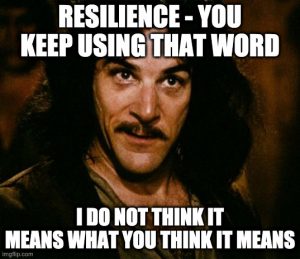Budgeting for Assessment
Workloads for Academics in Higher Education are often very complex, with teaching loads, research tasks and administration all juggling for our attention with lots of task switching adding to the complexity. For many academics, teaching loads are a significant part of their work, but explicitly looking at the time spent on assessment could bring better results for staff and students alike.
Contact Hours to Admin Hours
There are usually ad-hoc assumptions about the amount of administration time a module takes above and beyond the contact hours spent in front of a class. For our purposes contact hours could just as easily be delivering synchronous and asynchronous hours on-line as time spent in more traditional on-campus delivery.
A common such assumption is that it takes two hours of this administration time for each hour of contact, sometimes more. That administration time can be subdivided into various tasks such as preparation of teaching materials, delivery of assessment, and other correspondence with students etc..
Preparation time on teaching materials can obviously be markedly higher for the first presentation of a module, or after significant changes. Many academics are already undertaking substantial additional preparation time to re-factor materials for on-line delivery at the moment.
Assessment Hours
I want to focus on the time spent on assessment because I feel this is a serious time sink for most academics. This is partly because when it comes to reform of learning and teaching in a curriculum, assessment is often the last consideration because we are nervous about the serious consequences of getting things wrong. It is also partly because we can sometimes draw the conclusion that time spent on assessment equates directly to quality.
How often have you attempted to place a budget on your assessment time before delivering a module? I mean the time taken to design an assessment, deliver it to students, assess the submissions and deliver feedback. My guess is that very few of us have done this.
The outcomes of this can be serious. We often design assessments focusing on the first half of these tasks that take a tremendous and unquantified amount of labour to fully deliver, often much more than we really expected. This can result in a very stressed academic or team of academics, or the delivery of feedback is too late to be effectively useful to the students, or the quality and depth of the feedback suffers. Any combinations of these outcomes is also potentially likely.
Budget influences Design, poor Design blows the Budget
Agreeing a budget with a line manager, or even with yourself, can be informative. If you think the budget is too low you are faced with the choice of making the argument that additional resource is really required, or that you need to re-design the assessment to fit within your budget.
Of course, there are often times when additional resource really is required, but my argument here is that this should be a conscious choice, planned for and if possible agreed with your line manager who may be able to bring practical assistance, or at least balance out the rest of your workload.
Even if you agree a high budget, a good plan, and a good design minimises the risk of blowing that budget.
Design Choices
So what choices can we make to reduce the time burden? Some choices not only have no adverse effect on quality, but can actually deepen the quality of feedback or reflection opportunities for students. Here's a very non-exhaustive list of thoughts in this direction.
- Do you really need all those questions to confirm your learning outcomes? Do you have some questions that are just repeating the assessment of the same aspects? Trim them if so. Extra material can be used for tutorials instead.
- Have you considered the use of a good rubric if you aren't already using one? This can improve transparency of outcomes to students both before and after assessments and provide some generic feedback, leaving you with more time to give more focused feedback and can hugely improve the speed of marking.
- Can you partially automate some of the assessment? If assessments are being delivered on-line many Virtual Learning Environments allow you to set assessments with questions with set or calculated answers so some of the marking and feedback can be automated. You can combine these with deeper more free response questions.
- Can peer assessment accomplish some of your goals? If you are nervous about using peer assessment (and it does need care) what about using it in a formative way as part of your assessment diet. This can also greatly deepen students' understanding of how their work is marked and assessed.
- Can self assessment accomplish some of your goals? This can encourage highly reflective learning and allow you to guide the feedback based on the students' initial assumptions.
What are your ideas to reduce your assessment budget will keeping, or even deepening the quality?
Even if you don't undertake this formally with your line manager, try setting yourself as assessment budget, and consider how to work within it so that you can deliver authentic assessments, quality feedback in a way that leaves you time, focus and attention for the other parts of your job.

